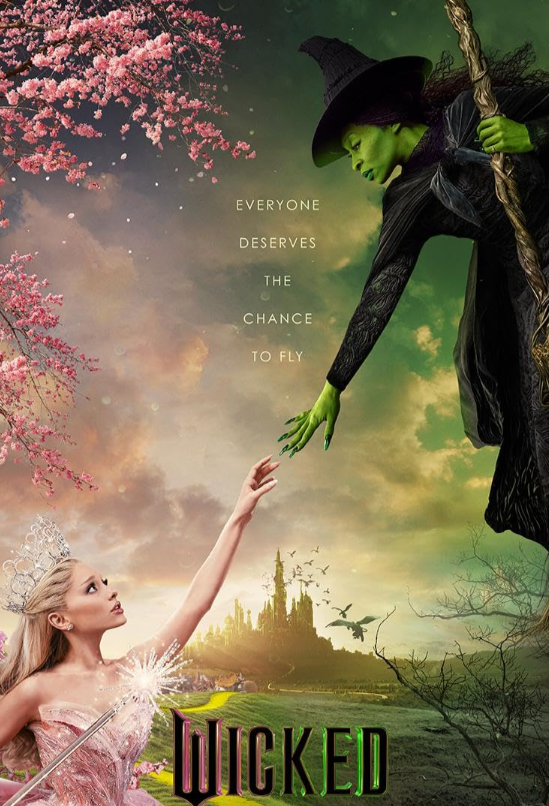The first of the two-part film adaptation of the Broadway musical “Wicked” released on Friday, excelling in ways the live production never could.
Both the movie and play serve as a prequel to the 1939 film “The Wizard of Oz” that gives the backstories of Elphaba, the Wicked Witch of the West and Glinda the Good Witch.
While the Wicked Witch of the West is the antagonist in “The Wizard of Oz,” the story of “Wicked” serves to humanize her and provide depth to her character. As the plot develops, the audience sees the characters change and fall into the roles they play in the original film.
Premiering in 2003, the play has earned its spot in musical history as one of the highest-grossing broadway shows of all time and the winner of multiple Tony awards, setting expectations high for the film.
The film adaptation stars Cynthia Erivo as Elphaba and Ariana Grande as Glinda. Both actresses have impressive musical backgrounds, with Grande being a pop singer with two Grammy Awards and Erivo being the recipient of both a Grammy and a Tony for her performance in the 2015 Broadway revival of “The Color Purple.”
Elphaba, judged her entire life for her green skin, attends Shiz University alongside her sister, Nessarose, played by Marissa Bode. Upon arrival, she is immediately scorned by her classmates, particularly Glinda. Interested in becoming a sorceress, Glinda seeks approval from Madame Morrible, the Headmistress of Shiz played by Michelle Yeoh. When Elphaba receives the headmistress’ approval instead, Glinda uses her popularity to bully Elphaba.
Eventually, they manage to put their differences aside and become friends, but unspoken conflicts between the two remain, guiding much of the film. This includes a love triangle between the two involving Fiyero, played by Jonathan Bailey, who delivers phenomenal vocals throughout the film.
Unlike the musical, the film’s immense budget and CGI opportunities made the sky the limit in terms of world-building and visual excellence. While the musical is bound to the stage with limited capabilities for elaborate visuals, the film’s lack of restrictions resulted in a far grander experience that immerses the audience in the large and colorful land of Oz.
In addition, post-production technology allowed for the land of Oz to feel open and expansive, with each setting having visual grandeur and towering beauty. When Glinda makes her first appearance in the film, we see her magically descend in a large bubble. While Glinda’s signature entrance is depicted on Broadway using a large prop hoisted aloft by cables, the stunning visuals in the film make the magic appear all the more real.
The movie features the score’s most prominent song “Defying Gravity” as Erivo and Grande perform a harmonic duet. The song’s immense power is established before it occurs, as parts of the melody are injected into earlier songs such as “The Wizard and I” and “A Sentimental Man,” as it is in the Broadway musical.
While the number features some of the most impressive vocals in the entire film, it becomes far more shocking when considering one fact: The actresses were singing live throughout the entire film.
“We chose to sing live because it meant that we would be further connected to the words we were saying,” Erivo said in behind-the-scenes footage. The most breathtaking instance of live singing occurs when Erivo delivers her phenomenal rendition of “Defying Gravity” all while performing demanding stunts and hurtling through the air.
While Erivo may deliver the most powerful vocal performance of the film, Grande’s vocals and acting work in tandem to create what is very likely the best on-screen performance of her career. Not only is she hilarious as the vindictive and popular Glinda, but her chemistry with Erivo establishes a strong connection between the two characters, adding genuine emotion to the dynamic.
“Wicked” not only lives up to the anticipation but exceeds it. Every aspect of the film works together like magic to form a wonderful piece of art. With a second part on the way, the film has set a high bar for cinema and music alike, reminding audiences why movies should be seen in theaters.









